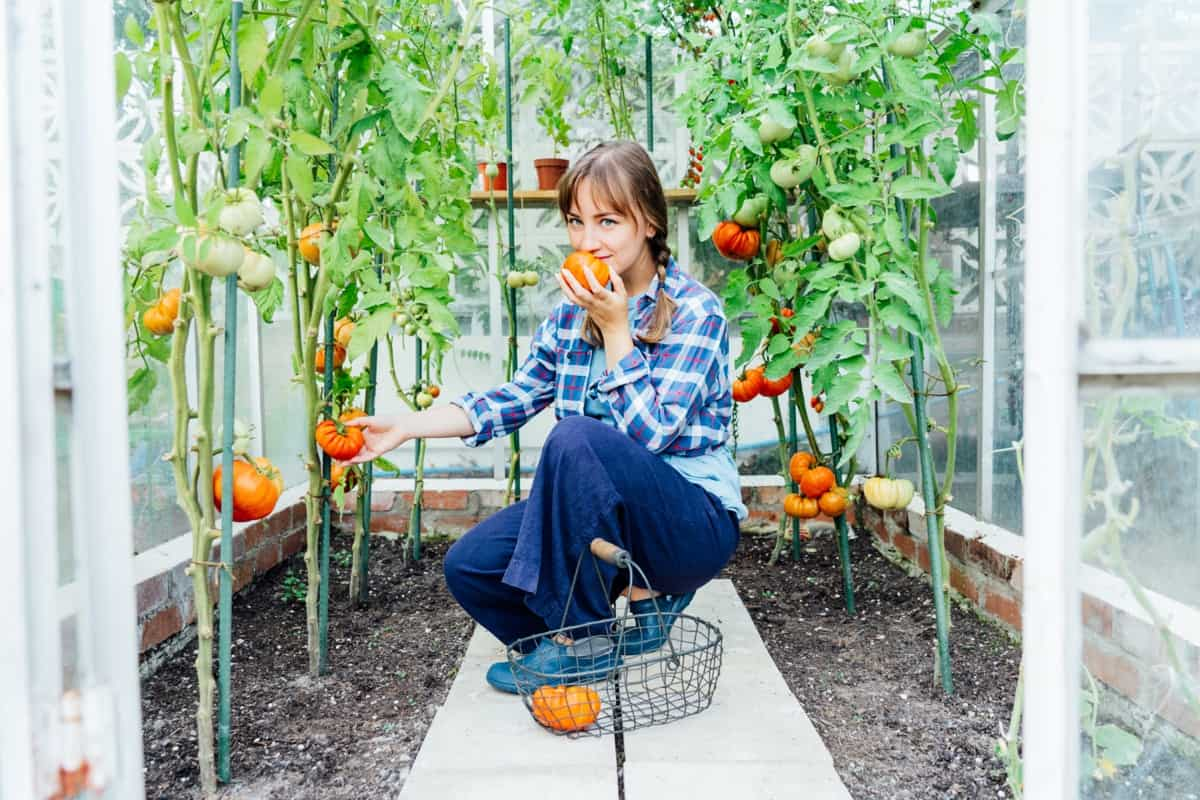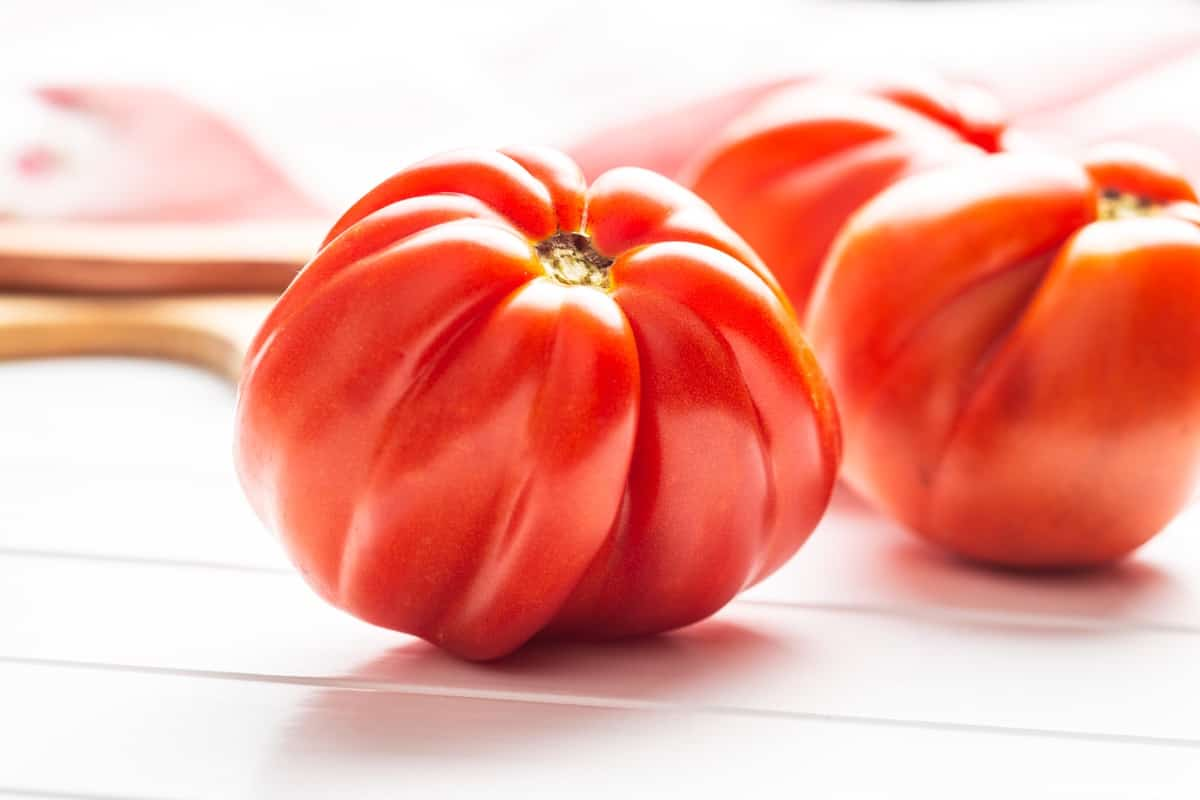These meaty and juicy tomatoes make delicious summer sandwiches and sliced snacks seasoned with sea salt. In terms of weight, beefsteak tomatoes are the biggest, weighing 450 grams or more. When it comes to Beefsteak tomato plant height, it grows up to six feet tall. This late-maturing tomato plant will take about 85 days to produce a bountiful harvest. To support its fruit, it needs a sturdy cage, trellis, or stake. This guide will take you step-by-step through growing and caring for beefsteak tomatoes.

Beefsteak Tomato Variety Sun Requirements
You should give beefsteak tomatoes full, direct sunlight for at least eight hours daily. Make sure there are no shadows cast by nearby buildings or trees. The best results can be achieved if you plant them on a slight slope with southern or southeastern exposure. In cooler climates, well-drained raised garden beds will warm early in the season, making them ideal for planting.
Soil Requirements for Growing Beefsteak Tomato
As with all tomato plants, beefsteaks need fertile, well-drained soil high in organic matter. It is best to plant in fertile clay and loam soils, as they produce high yields, while lighter soils drain and warm quickly, allowing harvests to be earlier. You should maintain a pH between 6.0 and 6.8. Ensure the bed is weeded, and mulch is applied between rows of tomatoes so weeds won’t grow and water is not lost. Adding black plastic mulch to the soil will warm it and radiate heat.
Temperature and Humidity Requirements for Growing Beefsteak Tomato
Ideally, tomatoes should be planted when the temperature is above 13°C. Despite being warm-weather crops, even a light frost can damage them. Protect your tomato plants from frost by covering them with frost blankets in the event of a temperature dip or potential frost.
Beefsteak Tomato Spacing: Plant-to-Plant and Row-to-Row
Make sure tomato plants are spaced between 18 and 36 inches apart. It is especially difficult to train beefsteak varieties since they are tall and require a lot of space. Space 5 feet or more apart for optimal growth and air circulation. Ensure the plant is tied to a trellis, stake, or cage. They need additional support because they grow too tall for a typical tomato cage, as their baseball-sized fruit can be quite heavy,
In case you missed it: Best Tomato Varieties for California: When to Plant for Southern, Northern, Central, Eastern, and Western Regions

How to Grow Beefsteak Tomatoes from Seed
- Choose high-quality beefsteak tomato seeds from a reputable supplier or garden center. Look for varieties that are well-suited to your climate and growing conditions.
- The soil should be prepared by removing weeds or debris. Mix in organic compost or well-rotted manure to improve the soil’s fertility and drainage.
- Fill seed trays or small pots with seed-starting mix. Moisten the mix and make small holes about ¼ inch deep.
- Place one or two seeds in each hole and cover them with the mix. Gently press the soil down to ensure good seed-to-soil contact.
- Place the trays or pots in a warm location, ideally between 21-27°C.
- Maintain consistent moisture by misting the soil regularly. Use a plastic cover or wrap to create a greenhouse effect and retain moisture. Beefsteak tomato germination time is in between 5-10 days.
- Once the seedlings have developed their first true leaves, transplant them. Dig a hole slightly larger than the seedling’s root ball.
- Gently remove it from the container, place the seedling in the hole, and backfill it with soil, gently firming it around the base.
Watering Requirements for Growing Beefsteak Tomatoes
Beefsteak tomatoes need consistent moisture in the soil, but overwatering should be avoided. Allow the soil to dry between waterings by watering deeply and thoroughly. On average, beefsteak tomatoes require watering once or twice a week, depending on weather conditions. As a general guideline, provide approximately 1-1.5 inches of water per week. It is recommended to water tomatoes at the base of the plant, directing the water toward the roots. Avoid overhead watering, as it can promote the spread of fungal diseases and may not effectively reach the roots.
Fertilizer Requirements for Growing Beefsteak Tomatoes
If you want big, juicy beefsteaks, don’t skimp on fertilizer. Generally, fertilizer should be applied twice or three times per month during the growing season. The exact fertilizer application frequency must be determined by monitoring the plants’ growth and overall health. Over-fertilizing a plant can result in excessive foliage growth that can detract from fruit production. Every three weeks, fertilize your plants with 450-500 grams per 100 square feet. Ideally, the ratio should be 8:32:16 or 6:24:24.
In case you missed it: How to Identify and Treat Tomato Blights: Organic Prevention and Natural Control

How to Prune a Beefsteak Tomato Plant
You should prune the plant regularly as it grows. Pinch out suckers, or new growth, that form in the crotch of the stronger branches when young and only 1/2 inch long. To prevent the plant from developing more than one or two main stems, do this weekly throughout the growing season. Plants can grow on the trellis more easily, slowing upward growth and stimulating branching. Each time the stem grows, wrap it around the twine in the same direction. Make sure you handle the stem carefully so that it does not break.
Common Pests and Diseases in Beefsteak Tomatoes
The beefsteak tomato variety is susceptible to a variety of diseases and pests. Monitor for any issues and resolve them as soon as possible. In addition to tomato hornworms and aphids, rodents such as squirrels and flea beetles are other common pests. Fungal diseases like early and late blights may be caused by humid weather. If you find any aphids, spray warm water on them to remove them.
Beetles, eggs, and larvae can also be handpicked and destroyed. Use row covers to prevent early flea beetle damage. You can prevent fungal diseases and blossom end rot by watering early in the day at the base of the plant, not overhead, and keeping the soil consistently moist. Good air circulation will also be encouraged by weeding around beefsteak. Crop rotation is the best way to prevent many of these issues moving forward.
Harvesting Beefsteak Tomato
Beefsteak tomato days to Maturity is 80-85 days. How many beefsteak tomatoes per plant? 12-13 Fruits. Harvest your tomato fruits when they are fully ripe, firm, and have developed their characteristic color. Gently twist or cut the stem to remove the tomatoes from the plant. Enjoy the delicious taste of homegrown beefsteak tomatoes in your favorite recipes.
In case you missed it: Best 12 Early Maturing Tomato Varieties for Your Garden

Conclusion
Growing and caring for beefsteak tomatoes can be a rewarding experience for any home gardener. By following these steps and providing the necessary care, enjoy a bountiful harvest of juicy, flavorful beefsteak tomatoes. Remember to give your plants the attention they need throughout the growing season, and you’ll be rewarded with a successful tomato crop.
- Feed Your Flock for Less: Top 10 Tips to Save on Chicken Feed
- Ultimate Guide to Ossabaw Island Hog: Breeding, Raising, Diet, and Care
- Hatching Answers: The Top 10 Reasons Your Chickens Aren’t Laying Eggs
- Eggs and Economics: Breaking Down the Cost of Raising Backyard Chickens
- Defend Your Greens: Proven Methods to Keep Iguanas Out of Your Garden
- Ultimate Guide to Cinnamon Queen Chicken: A Comprehensive Guide for Beginners
- Ultimate Guide to California Tan Chicken: Breeding, Raising, Diet, Egg-Production and Care
- Ultimate Guide to Marsh Daisy Chicken: Breeding, Raising, Diet, and Care
- 10 Types of Chicken Farming Businesses You Can Start for Profits